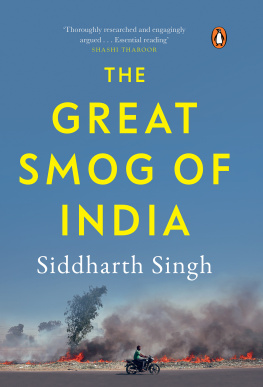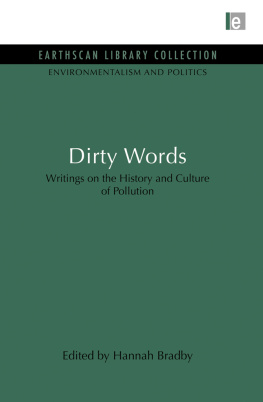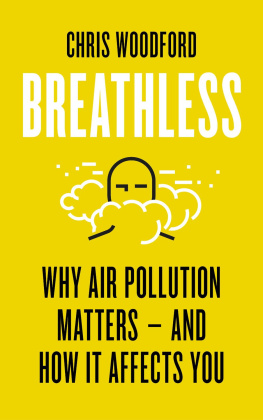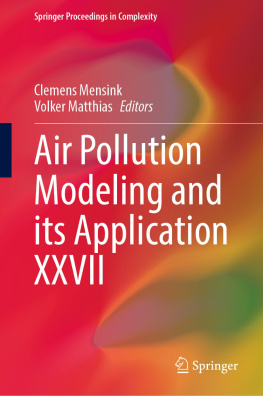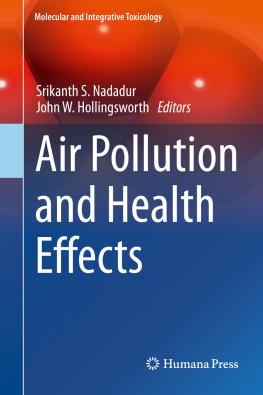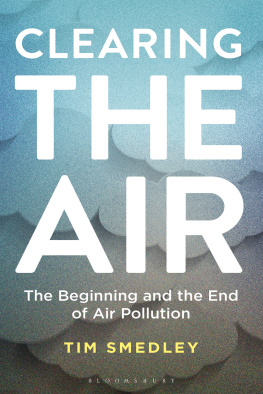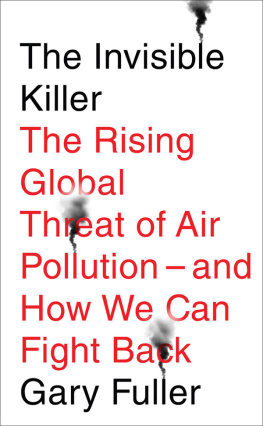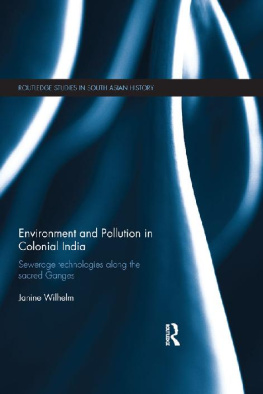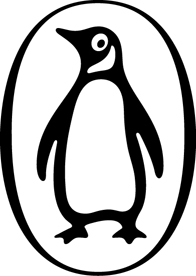India is a country I know well and it is close to my heart, and this book underlines the urgent need to tackle the countrys air pollution crisis while illuminating the achievements already made by the government, regulatory institutions and businesses. Air pollution at the levels experienced around the world is an attack on our freedom and, as Singh explains, all too often it is vulnerable people and children who suffer the most. Indias government faces a huge challenge but I am confident it is committed to tackling this problem and our wider climate crisis. I congratulate Singh on writing a book that enhances our understanding of this environmental crisis, and also provides a way forward. The world will succeed when India succeedsLaurence Tubiana, chief executive of the European Climate Foundation and a key architect of the 2015 Paris Agreement
Siddharth Singhs excellent book analyses the multidimensional aspects of the extreme crisis that is air pollution in India. Singhs work provides policy solutions and the way forward. A must-read for everyone interested in understanding air pollution and envisaging the way forward in dealing with itMenaka Guruswamy, advocate at the Supreme Court of India and lecturer in law at Columbia Law School
1
The Silence of a Crisis
I T WAS A bustling Saturday evening in the early winter days of 2005 in Delhi. The market in Paharganj was buzzing with excitement, bathed in the smells of street food and the noise of hawkers and passing traffic. Shoppers were picking out their favourite sweets, and a few others were making larger purchases from their bonuses. Diwali festivities, after all, were just around the corner.
Thats when the first bomb exploded. Shoppers and passers-by near a jewellery shopwhere the explosive device had been placedwere shredded by the shrapnel from the bombs. Many others had been charred by the high temperatures from the flames. Those who survived were reeling from the loud explosion. Three more bombs were to explode in quick succession in the city that day. Sixty-seven people went on to lose their lives.
This was not the first terrorist attack in Indias capital city, nor has it been the last since then. Delhiwallahs have been victims to political violence for years. Over the years, a few hundred people have lost their lives to such grotesque acts of terror. The wounds have been ingrained into the minds of the capitals residents.
The very fabric of the city, its culture and institutions has co-evolved with the threat of terror. Citizens have in turn accepted into their lives pat-down searches while entering shopping malls and hotels, long waiting lines for security at metro stations, checkpoints and advertisement campaigns by the Delhi Police urging people to be vigilant playing on loop on speakers at key marketplaces. The city is littered with metal detector door frames. Much of this would be unimaginable in other metropolises of the world.
Behind these visible reactions, new institutions such as the National Investigation Agency have been created, modern technology has been acquired and governments have toyed with changing laws to deal with the issue. In some cases, law enforcement officers and even high-ranking ministers have lost their jobs. Invariably, such attacks invoke the attention and response at the highest levels of Indias most important leadersfrom the prime minister to leaders in the Opposition.
Today, Indias capacity to fight terrorism may still be lacking in many waysas security commentators will often tell youbut it is a fact that copious resources have been invested into improving it and the issue is given significant attention by think tanks, newspaper editorials and dinner-table conversations.
The contrast, however, could not be more striking when the annualand lethalsmog descends on to the vast swathes of northern India every winter. In sheer magnitude, air pollution kills over a million Indians every yearalbeit silently. More residents of Delhi are killedsilentlyevery week than have been killed in terrorist incidents in the past decade. More Indians are killed every week by air pollution than have been killed in all IndiaPakistan wars put together since Independence. Again, silently. Hundreds of thousands more are thrown into a spiralling cycle of hospital visits, poor health and financial trouble, impacting their productivity and ability to participate in the economy. Children born in regions of high air pollutionincluding Delhihave been seen to develop reduced lung function that is often irreversible. They also exhibit diminished cognitive abilities. They all suffer, silently.
Much like the deaths themselves, policy responses to air pollution have been silent. The silence is not merely a function of inaction: in fact, by several measures, India has made strides in cleaning up its energy use and reducing emissions. Regulatory and institutional action has been silently operating in the background, providing a course correction to the sheer might of economic forces that have led the country towards a path of inefficient and substantial use of polluting fuels.
Among other measures, millions of energy-saving bulbs have replaced energy-guzzling ones, renewable energy capacity has expanded at an impressive rate, transport fuel has become cleaner over time and the industry has been pushed to become more efficient by innovative regulations. However, air pollution has skyrocketed as energy efficiency gains have been outstripped by the sheer force of Indias economic growth. In a country with poverty and low institutional capacity, policymakers have naturally gravitated towards the expansion of the economic pie over concerns about externalities such as pollution.
Take the case of cooling. Owing to technological improvements and an energy efficiency labelling system, air conditioners (ACs) have become more energy efficient over timetherefore demanding less energy per unit and thus contributing to lower pollution per unit of use. However, over four million AC units are sold in India every year and the energy demanded for space cooling has increased by over 85 per cent since 2010. In 2016, around 90 million tonnes of CO2 were emitted from running ACs in India, as much of the energy that fuelled it came from burning coal.
The quantum of additional demand continues to outstrip the pace of technological improvements, and this trend will hold in the future: today, around 4 per cent of Indian households have ACs, compared to 60 per cent in China. If the energy consumed continues to come from coal, the associated emissions from AC use will keep rising significantly, contributing to the air pollution crisis. Meanwhile, low institutional capacity has ensured that India has not been able to enforce energy efficiency regulations in housing, which could significantly lower energy demand and, therefore, emissions from cooling.

